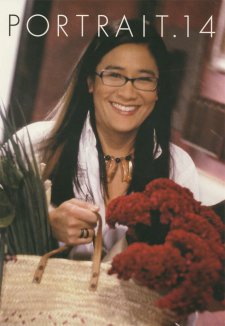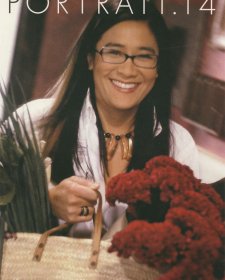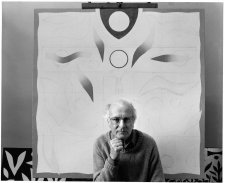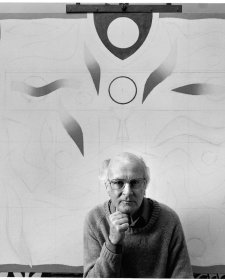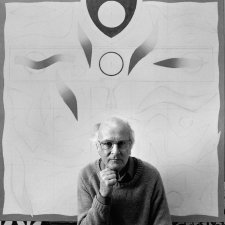Ninette Dutton OAM (b. 1923), artist, broadcaster and author, was born in Adelaide and educated at Creveen and Woodlands before studying Social Science at the University of Adelaide. In 1944 she married the writer Geoffrey Dutton.
They lived at Anlaby, the Duttons' family property at Kapunda, and later Piers Hill, a property near Angaston, before they separated in the early 1980s. During the 1950s she worked in Oxford and studied at the Ruskin School of Art and the couple travelled extensively and adventurously through Europe. Asia, Africa and the Middle East. In the 1960s she learned enamelling in Kansas; her ensuing enamel works were widely collected, and she wrote The Beautiful Art of Enamelling in 1966, In early 1968 she saved the life of Patrick White, a dear friend, by holding on to his arm when he fell into a blowhole on Kangaroo Island. Over the 1970s, 80s and 90s she published books and delivered radio programmes on cooking, flowers, gardening and the seasons, and for some years she wrote a column titled 'The Passionate Gardener' in the Advertiser, Adelaide. Her most recent book is Home (2000), which describes her decision to move from South Australia to Canberra.
Sydney born artist Bette Mifsud studied at the University of NSW College of Fine Arts. Master of Fine Arts with first class honours, after receiving a BA Visual Arts from Sydney College.
She has exhibited extensively and held many solo exhibitions in various Australian Galleries as well as at the National Museum of Fine Art, Malta. She has also participated in a wide array of national and international group exhibitions, most notably and recently at the 2004 Citygroup Private Bank Photographic Prize at the Art Gallery of NSW, in which this portrait was featured.
Mifsud and Dutton met in Katoomba about four years ago. In a recent statement Mifsud explained it was Dutton's warmth, toughness, beauty and sharp intellect that immediately struck her. She explained that she also wanted her portrait to capture something of the sitter's frailty.
While at first glance this is a straightforward portrait, it incorporates several portraits and within it there are layers of complexity and depth. In discussing the portrait Mifsud states that she is mindful of the fact that no single image can ever fully represent a living human being and as such, developed the complex image of Ninette 'reflected' in the mirror, which is also a treasured family heirloom. This was achieved by using four photographs of the sitter's face taken from slightly different angles, which have been overlaid. Mifsud explains the analogy of the mirror; which 'might also suggest that we always see ourselves differently to how others see us. In the mirror we all "Prepare a face to meet the faces that (we) meet" (T.S Eliot). We prepare different faces for different circumstances. I see the mirror as a type of photographic recorder of the countless invisible faces of an individual changing over time'.

